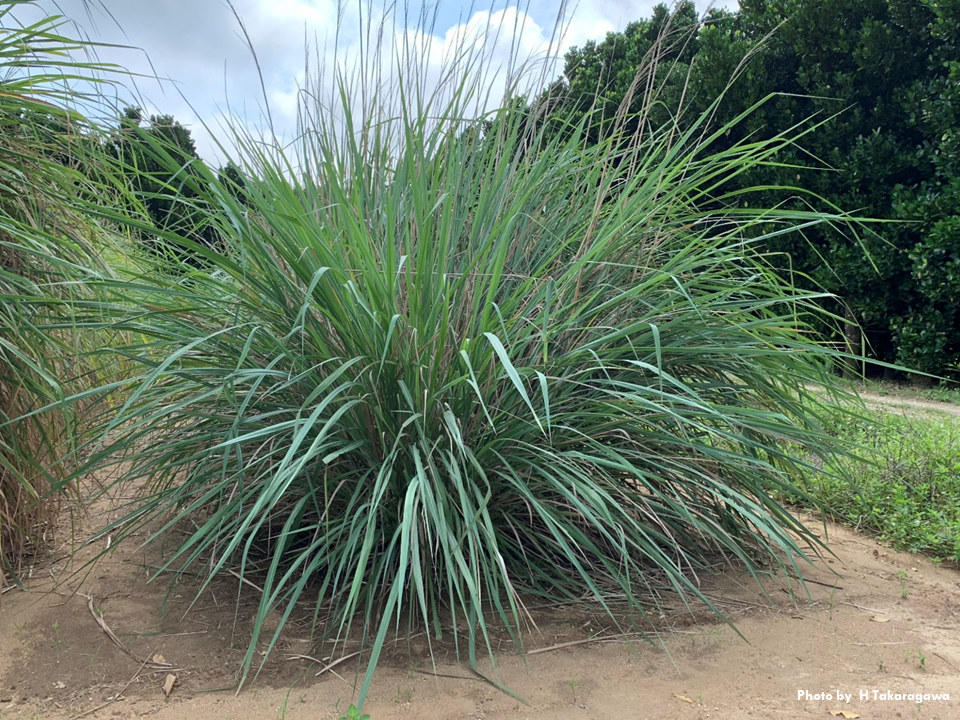Pick Up
1101. Metabolites That Support High Water Use Efficiency in Erianthus

1101. Metabolites That Support High Water Use Efficiency in Erianthus
Sugarcane, a sugar and energy crop, is economically very important, with global production exceeding 1.8 billion tons as of 2021 (FAOSTAT) and dominating the three major cereals — maize (1.2 billion tons), rice (790 million tons), and wheat (770 million tons) — on a weight basis.
Sugarcane productivity is highly dependent on rainfall, and cultivation requires sufficient sunlight and abundant water sources. Improving drought tolerance is one of the important goals of sugarcane breeding, but the genetic base has become narrow due to hybridizations among modern varieties, and improvements in drought tolerance and other environmental stress tolerance have lagged behind. At JIRCAS, research is being conducted to expand the genetic base and improve tolerance to environmental stresses through intergeneric hybridizations using the closely related genetic resource, Erianthus arundinaceus.
Sugarcane is a large crop with a long growing season, and the mechanism for establishing drought tolerance is considered complex. In a paper published online on September 11 in Planta, the authors attempted to understand the physiological mechanisms of drought tolerance by scaling it down to the gas exchange properties of leaves and focusing on water use efficiency, which is the photosynthetic rate divided by stomatal conductance (namely, a transpiration index). To be more specific, we investigated the gas exchange characteristics and leaf morphology of the sugarcane cultivar 'NiF8' and the Erianthus accession 'JW630', and comprehensively analyzed metabolites in terms of part/organ and metabolites (*This method is called whole-plant metabolome analysis.).
The results of the analysis revealed that Erianthus exhibits significantly higher water use efficiency than sugarcane, has lower stomatal density on the underside of its leaves (*less stomatal density means less water loss through transpiration), and contains more metabolites that function in response to stress, such as betaine and GABA (γ-aminobutyric acid), in its leaves. Although there are still several challenges to be verified, these metabolites can be proposed as candidate biomarkers (*substances that indicate stress tolerance or stress damage in the organism) for selecting drought-tolerant genotypes.
So far, the high drought tolerance of Erianthus has been understood in linkage with its robust root-forming capacity. The results of this study revealed traits involved in drought tolerance not only in the underground organ (root) but also in the above-ground organs, indicating the possibility of using this species to comprehensively improve drought tolerance in sugarcane from both aspects.
JIRCAS will continue to test the applicability of improving drought tolerance traits both in the underground and aboveground parts of the plant via intergeneric hybridizations between sugarcane and Erianthus.
Reference
Takaragawa, H., Wakayama, M. Responses of leaf gas exchange and metabolites to drought stress in different organs of sugarcane and its closely related species Erianthus arundinaceus. Planta 260, 90 (2024). https://doi.org/10.1007/s00425-024-04508-w
Contributor: TAKARAGAWA Hiroo, Tropical Agriculture Research Front (TARF)
